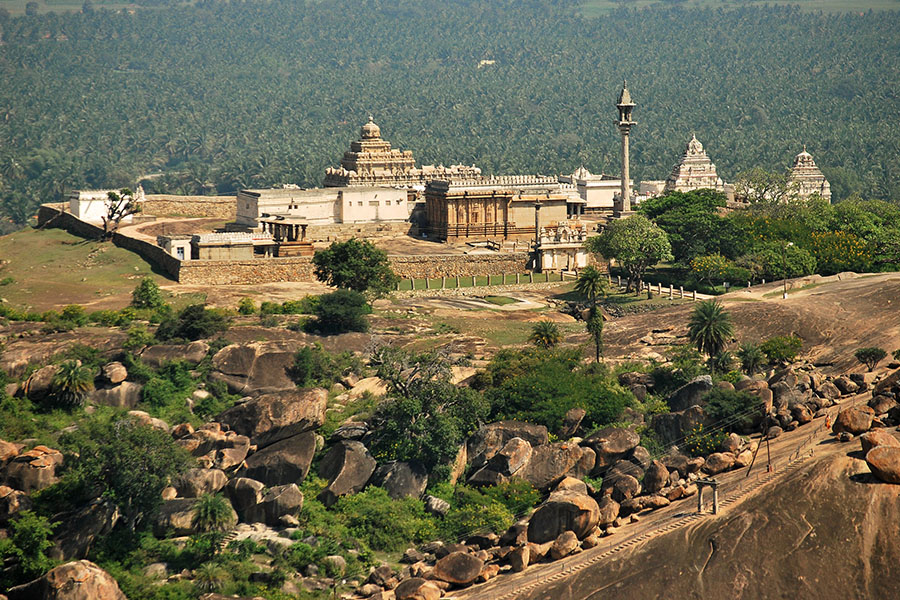Qutub Minar Delhi: History, Architecture, fees and Timing

The Qutub Minar, a towering symbol of Delhi’s historical grandeur, is more than just a tall structure; it’s a historical testament to the architectural brilliance of the past. Standing at 73 meters (240 feet) high, this majestic minaret is not only the tallest brick minaret in the world but also a UNESCO World Heritage site. With its rich history, intricate carvings, and significant cultural value, the Qutub Minar continues to captivate visitors from around the globe. In this comprehensive guide, we’ll delve into the history, architectural marvels, and visitor experiences associated with the Qutub Minar.
The Historical Significance of Qutub Minar

Origins and Construction
The Qutub Minar’s story begins in 1193 AD, commissioned by Qutb-ud-din Aibak, the founder of the Delhi Sultanate. It was initially conceived as a victory tower to celebrate the Muslim conquest of Delhi. The original structure was completed by Aibak’s successor, Iltutmish, and further additions were made by Firoz Shah Tughlaq, expanding its height and embellishing its design.
Historical Context
The Qutub Minar stands as a powerful symbol of the Islamic triumph over the Hindu rulers of Delhi. Its construction marked the beginning of a new era in Delhi’s architectural and cultural landscape, blending Islamic artistry with local styles.
Architectural Wonders
Design and Structure
The Qutub Minar is renowned for its remarkable architectural features. Constructed primarily from red sandstone, the minaret showcases intricate carvings and inscriptions in Arabic. The tower is divided into five distinct stories, each separated by a projecting balcony.
- Height and Dimensions: The Qutub Minar reaches an impressive height of 73 meters (240 feet) and has a base diameter of 14.3 meters (47 feet), tapering to 2.7 meters (8.9 feet) at the top.
- Materials and Construction: The use of red sandstone, along with marble and sandstone, highlights the craftsmanship of the era. The minaret’s design integrates various elements of Indo-Islamic architecture.
Decorative Elements
The Qutub Minar is adorned with delicate carvings and verses from the Quran. Each floor features elaborate floral motifs and geometric patterns, reflecting the artistic sophistication of the time.
- Carvings and Inscriptions: The inscriptions, primarily in Arabic, include Quranic verses and commemorative inscriptions, providing historical context and honoring the builders.
- Architectural Style: The blend of Islamic and local architectural styles is evident in the minaret’s design, which combines Persian influences with traditional Indian aesthetics.
Visiting the Qutub Minar
Location and Accessibility
Located in Mehrauli, South Delhi, the Qutub Minar is easily accessible via various modes of transportation.
- Geographical Location: Situated approximately 15 kilometers (9 miles) from central Delhi, the site is well-connected by public transport and private vehicles.
Entry Fees and Timings
- Entry Fees: For Indian citizens, the entry fee is ₹40. For foreign nationals, the entry fee is ₹600. Children below the age of 15 can enter free of charge.
- Timings: The Qutub Minar is open to visitors daily from sunrise to sunset. It is advisable to check for any specific holiday closures or special hours before planning your visit.
Nearby Attractions
The Qutub Minar complex houses several other historical landmarks that are worth exploring:

- Quwwat-ul-Islam Mosque: Located adjacent to the minaret, this mosque is one of the earliest mosques built in India and showcases early Islamic architecture.
- Iron Pillar of Delhi: An ancient marvel of metallurgy, this pillar stands within the Qutub Complex and is renowned for its rust-resistant properties.

Cultural Insights
Local Traditions and Customs
The Qutub Minar is not only a historical monument but also a part of the vibrant cultural tapestry of Delhi. Various festivals and local events are celebrated in its vicinity.
- Festivals and Events: The site often hosts cultural events and festivals that highlight Delhi’s rich heritage.
- Traditional Practices: Visitors engage in local traditions and photography, capturing the minaret’s grandeur against the backdrop of Delhi’s bustling life.
Cuisine and Dining
Exploring the local cuisine is an integral part of visiting Delhi. Nearby eateries offer a taste of traditional Delhi cuisine:
- Local Delicacies: From spicy chaats to flavorful Mughlai dishes, the local food scene is diverse and delicious.
- Dining Tips: There are numerous restaurants and street food stalls close to the Qutub Minar, offering a variety of options for all tastes and budgets.
Activities and Experiences
Guided Tours

To fully appreciate the historical and architectural significance of the Qutub Minar, consider taking a guided tour.
- Tour Options: Various guided tours provide in-depth knowledge about the minaret and its surroundings.
- Self-Guided Exploration: For those who prefer a more flexible approach, self-guided tours with the help of informational plaques are also available.
Photography Tips
Capturing the beauty of the Qutub Minar requires some planning:
- Best Times to Visit: Early mornings or late afternoons offer the best lighting conditions for photography.
- Popular Shots: Focus on the minaret’s intricate carvings, the surrounding gardens, and panoramic views of Delhi.
Travel Tips
Accommodation
Finding the right place to stay can enhance your visit:
- Hotels Near Qutub Minar: There are several hotels and guesthouses in the vicinity, ranging from budget to luxury options.
- Booking Tips: Consider booking in advance, especially during peak tourist seasons, to secure the best rates and availability.
Transportation
Navigating Delhi is straightforward with various transportation options:
- Public Transport: The Delhi Metro and local buses provide convenient access to the Qutub Minar.
- Private Transport: Taxis and rideshare services offer a more comfortable and personalized travel experience.
Safety and Health Precautions
Safety Guidelines
Ensuring a safe visit involves being aware of your surroundings and following certain precautions:
- Visitor Safety: Watch out for uneven paths and crowded areas, and adhere to any site-specific rules and regulations.
- Emergency Services: Familiarize yourself with local emergency contact numbers and services for any unforeseen situations.
Health Tips
Delhi’s climate can be challenging, so it’s important to take care of your health:
- Weather Conditions: Prepare for Delhi’s hot and dry weather by dressing appropriately and staying hydrated.
- Hydration and Sun Protection: Use sunscreen and carry water to stay hydrated throughout your visit.
Budget Planning
Cost of Visiting
Understanding the costs involved can help in planning a budget-friendly trip:
- Entry Fees: The entry fees for the Qutub Minar vary depending on whether you are an Indian or foreign tourist. The fee is ₹40 for Indians and ₹600 for foreigners.
- Additional Costs: Budget for potential additional expenses, such as guide fees and souvenirs.
Cost-Saving Tips
Maximize your budget with these tips:
- Discounts and Offers: Look out for any available discounts or special offers on tickets or guided tours.
- Budget-Friendly Options: Explore affordable dining and transport options to keep costs in check.
Local Cuisine
Must-Try Foods
Delhi is renowned for its diverse and flavorful cuisine:
- Signature Dishes: Sample local specialties such as biryani, kebabs, and street food like chaat and pakoras.
- Eating Out: Explore popular restaurants and food stalls near the Qutub Minar for an authentic culinary experience.
Culinary Experiences
Enhance your visit with local culinary experiences:
- Cooking Classes: Participate in cooking classes to learn about traditional Indian dishes.
- Food Tours: Join guided food tours to experience the best of Delhi’s food scene.
Conclusion
Summary
The Qutub Minar is a remarkable testament to Delhi’s rich history and architectural prowess. Its intricate design, historical importance, and the surrounding attractions make it a must-visit landmark. Whether you’re an architecture enthusiast, history buff, or simply a curious traveler, the Qutub Minar offers a fascinating glimpse into Delhi’s past.
Booking your Trip
Plan your visit to the Qutub Minar and immerse yourself in the grandeur of this historical monument. Explore its surroundings, savor local cuisine, and capture unforgettable memories of one of Delhi’s most iconic landmarks.
FAQ
What is the Qutub Minar?
The Qutub Minar is a towering minaret located in Delhi, India. It was built in 1193 AD and stands at 73 meters tall, making it the tallest brick minaret in the world.
Who built the Qutub Minar?
The Qutub Minar was commissioned by Qutb-ud-din Aibak, the first ruler of the Delhi Sultanate. His successors, including Iltutmish and Firoz Shah Tughlaq, completed and expanded the minaret.
What are the visiting hours for the Qutub Minar?
The Qutub Minar is open daily from sunrise to sunset. Entry fees are applicable for both Indian and foreign visitors.
How much does it cost to visit the Qutub Minar?
The entry fees for the Qutub Minar vary depending on whether you are an Indian or foreign tourist. Check the latest rates before your visit.
Are there any nearby attractions to visit?
Yes, nearby attractions include the Quwwat-ul-Islam Mosque and the Iron Pillar of Delhi, both located within the Qutub Complex.
What are some tips for photographing the Qutub Minar?
Visit early in the morning or late in the afternoon for the best lighting. Focus on capturing the minaret’s intricate carvings and the panoramic views of Delhi.
How can I reach the Qutub Minar?
The Qutub Minar is accessible via public transport such as the Delhi Metro and buses, or by private transport like taxis and rideshare services.
What should I wear when visiting the Qutub Minar?
Wear comfortable clothing suitable for Delhi’s hot and dry climate. It’s also advisable to wear sunscreen and carry water to stay hydrated.


